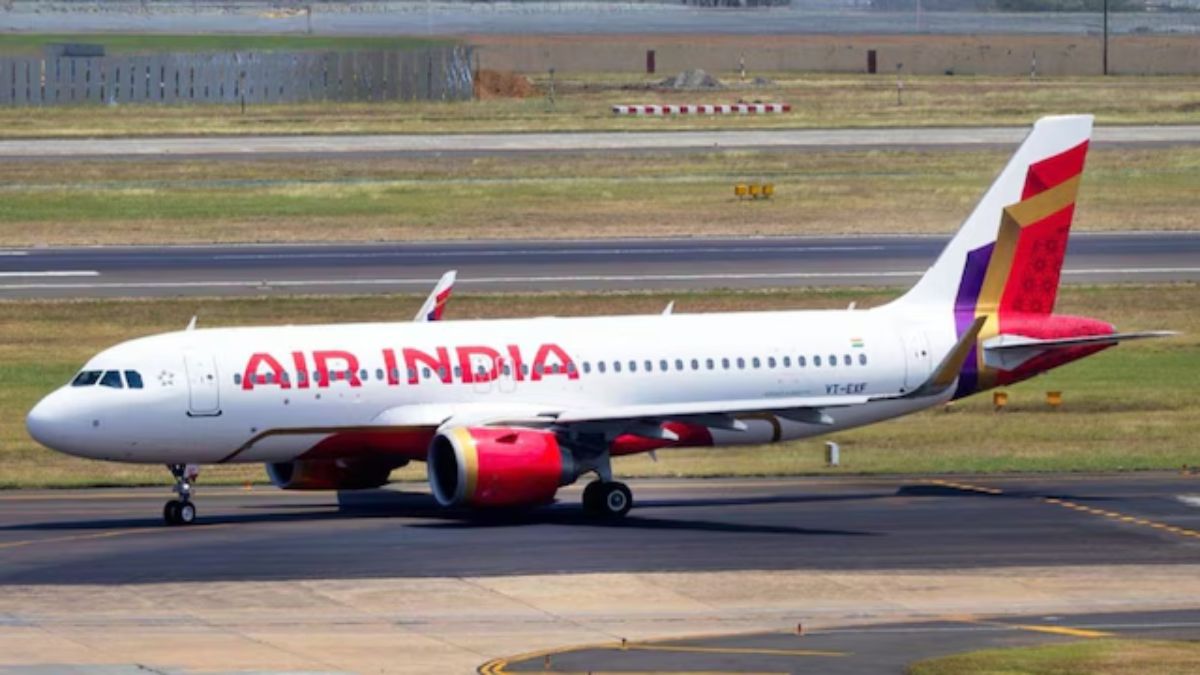Air India said that it will reduce flights using narrow-body aircraft on 19 routes and will stop flying on three others for now.
These changes will affect about five per cent of its total narrow-body services.
The decision comes as the airline continues to deal with the aftermath of its worst crash in decades. On June 12, Air India flight AI-171 to London, with 242 people on board, crashed in Ahmedabad.
ALSO READ | Bengaluru doctor threatened to crash Air India Express plane. Here’s why
Everyone on the flight, except one person, died along with nearly 29 others on the ground when the plane hit a medical complex in the Meghaninagar area shortly after takeoff.
In this explainer, we look at which routes are affected by the operations cut and what passengers can do if their flight is cancelled.
Let’s take a look:
Air India cuts narrowbody flights: Which routes are affected?
Air India is temporarily reducing flights on 19 domestic routes and suspending services on three routes, two international and one domestic, as part of efforts to maintain stable operations after the June 12 plane crash in Ahmedabad, it said in a statement.
These changes amount to about five per cent of the airline’s total narrow-body flights.
In a statement, the airline said it was making “temporary cuts of less than five per cent to its overall narrow-body network”.
Impact Shorts
More ShortsHere is the full list of domestic routes with reduced frequency until July 15:
Bengaluru–Chandigarh: Reduced from 14 to 7 per week
Delhi–Bengaluru: 116 to 113 per week
Delhi–Mumbai: 176 to 165 per week
Delhi–Kolkata: 70 to 63 per week
Delhi–Coimbatore: 13 to 12 per week
Delhi–Goa (Dabolim): 14 to 7 per week
Delhi–Goa (Mopa): 14 to 7 per week
Delhi–Hyderabad: 84 to 76 per week
Delhi–Indore: 21 to 14 per week
Delhi–Lucknow: 28 to 21 per week
Delhi–Pune: 59 to 54 per week
Mumbai–Ahmedabad: 41 to 37 per week
Mumbai–Bengaluru: 91 to 84 per week
Mumbai–Kolkata: 42 to 30 per week
Mumbai–Coimbatore: 21 to 16 per week
Mumbai–Kochi: 40 to 34 per week
Mumbai–Goa (Dabolim): 34 to 29 per week
Mumbai–Hyderabad: 63 to 59 per week
Mumbai–Varanasi: 12 to 7 per week
The suspended routes include seven weekly flights each on the following routes, paused until at least July 15:
Bengaluru–Singapore (AI2392/2393)
Pune–Singapore (AI2111/2110)
Mumbai–Bagdogra (AI551/552)
“Despite these temporary reductions, Air India will continue to operate close to 600 daily flights with its narrow-body aircraft on 120 domestic and short-haul international routes,” the statement read.
The airline also said these cuts are meant to improve overall operational stability and reduce the chances of last-minute cancellations.
What to do in case your flight is cancelled?
Air India has said it is reaching out to passengers affected by flight cancellations to offer them options such as alternate flights, free rescheduling or full refunds, depending on what they prefer.
“The revised schedule is being progressively made available on our website, http://airindia.com, mobile app, and through our contact centre. We remain committed to restoring our full schedule as soon as practicable, while at all times prioritising the safety of our passengers, crew and aircraft,” the airline said in a statement.
If you want to check the status of your refund, here’s how you can do it:
Step 1: Go to https://www.airindia.com/in/en/contact-us/customer-support-portal/refunds.html
Step 2: Click on ‘status check on pending refund’
Step 3: Fill in your details and submit the form
Air India plane crash in Ahmedabad
Following the crash, bookings for Air India’s domestic flights have dropped by nearly 20 per cent, and fares have gone down by 8 to 15 per cent, according to Indian Association of Tour Operators (IATO) President Ravi Gosain.
On June 12, a London-bound Air India Boeing 787-8 Dreamliner crashed shortly after takeoff from Ahmedabad’s Sardar Vallabhbhai Patel International Airport. The aircraft hit a hostel building on the campus of BJ Medical College in the Meghani Nagar area.
The crash claimed the lives of 241 people on board and 33 others on the ground.
With inputs from agencies
)